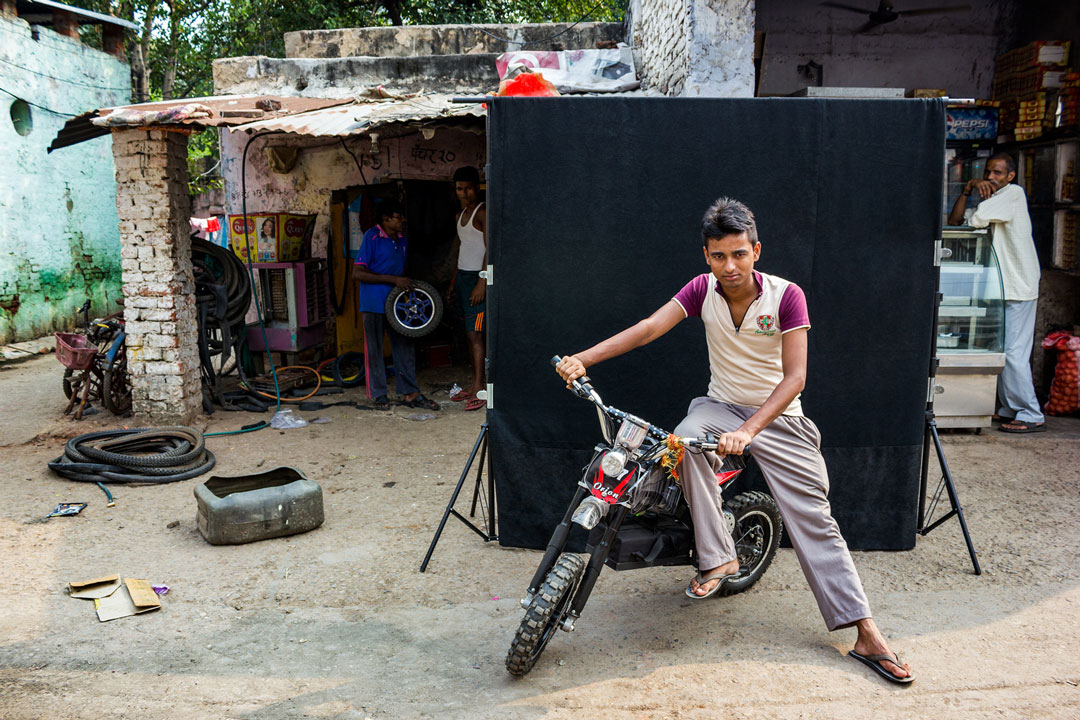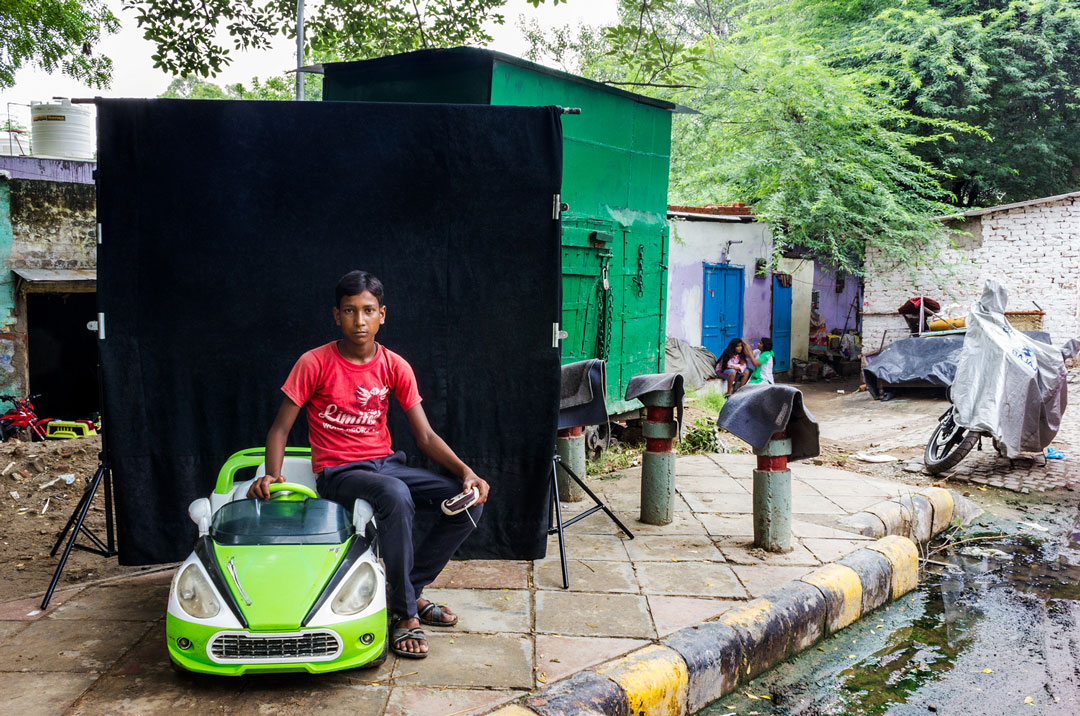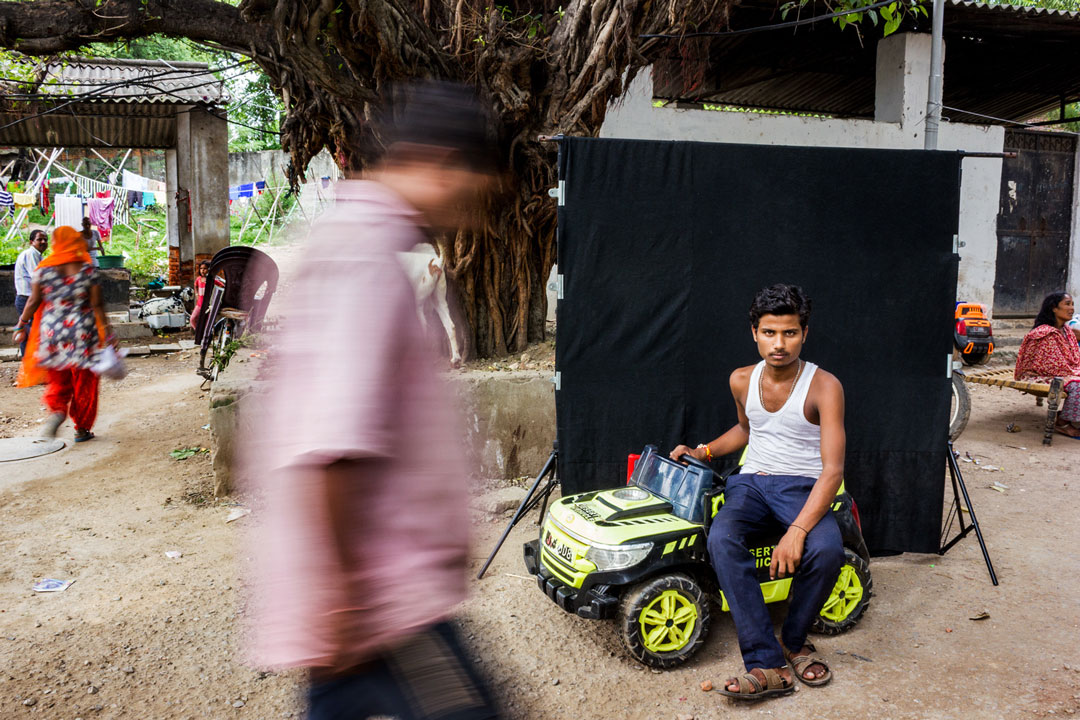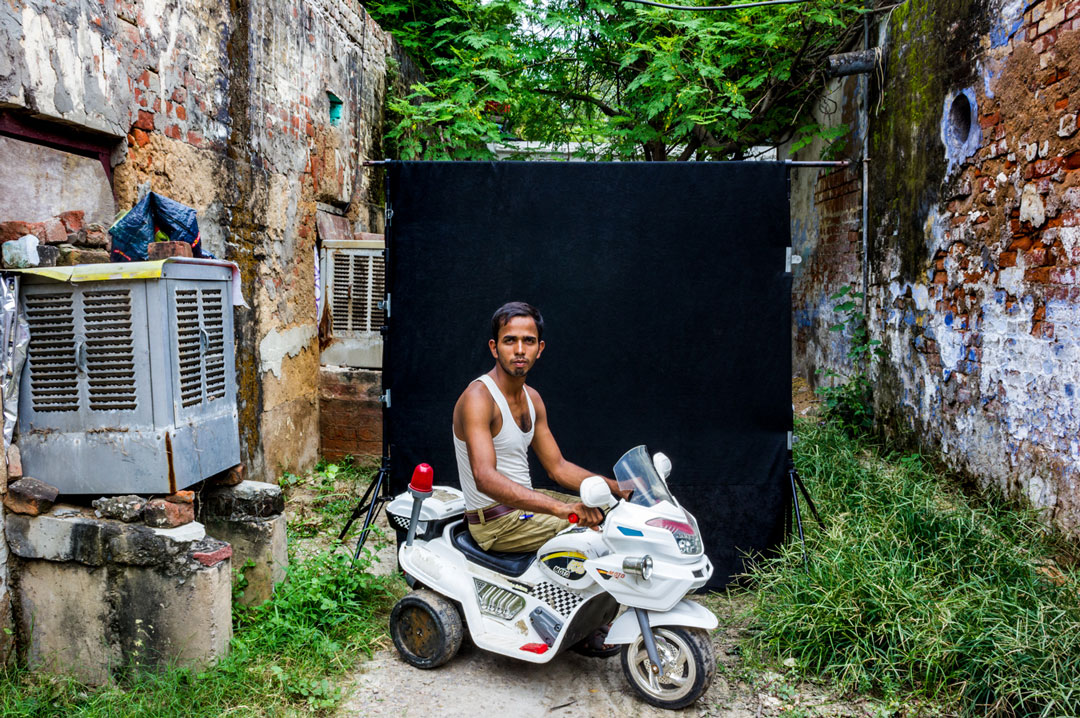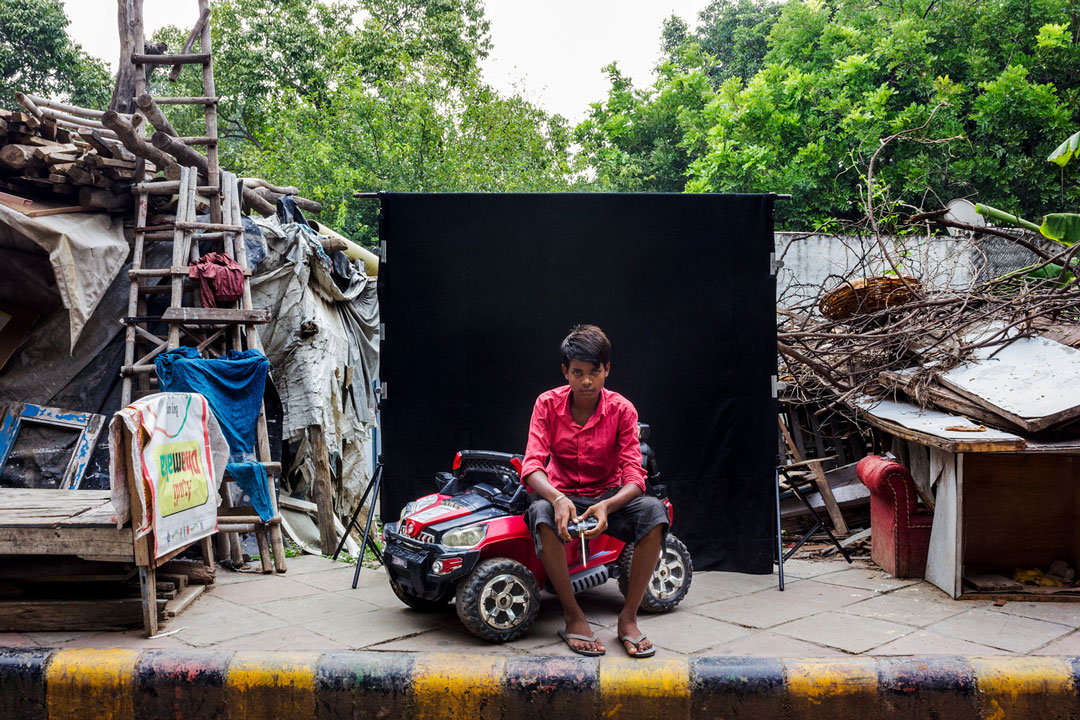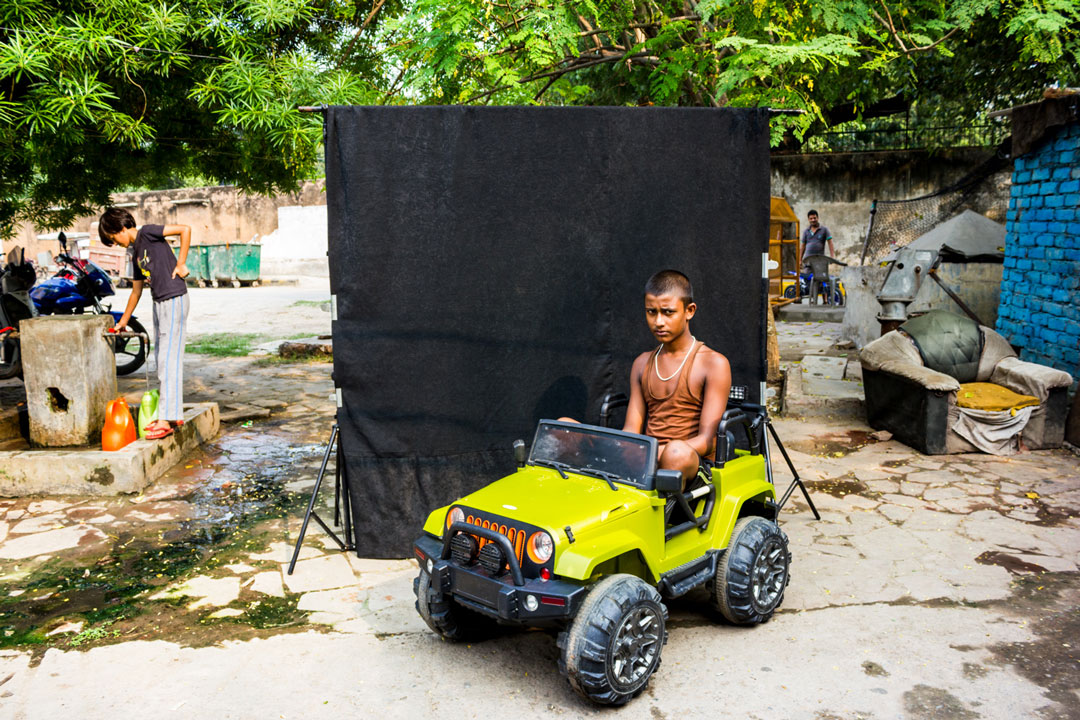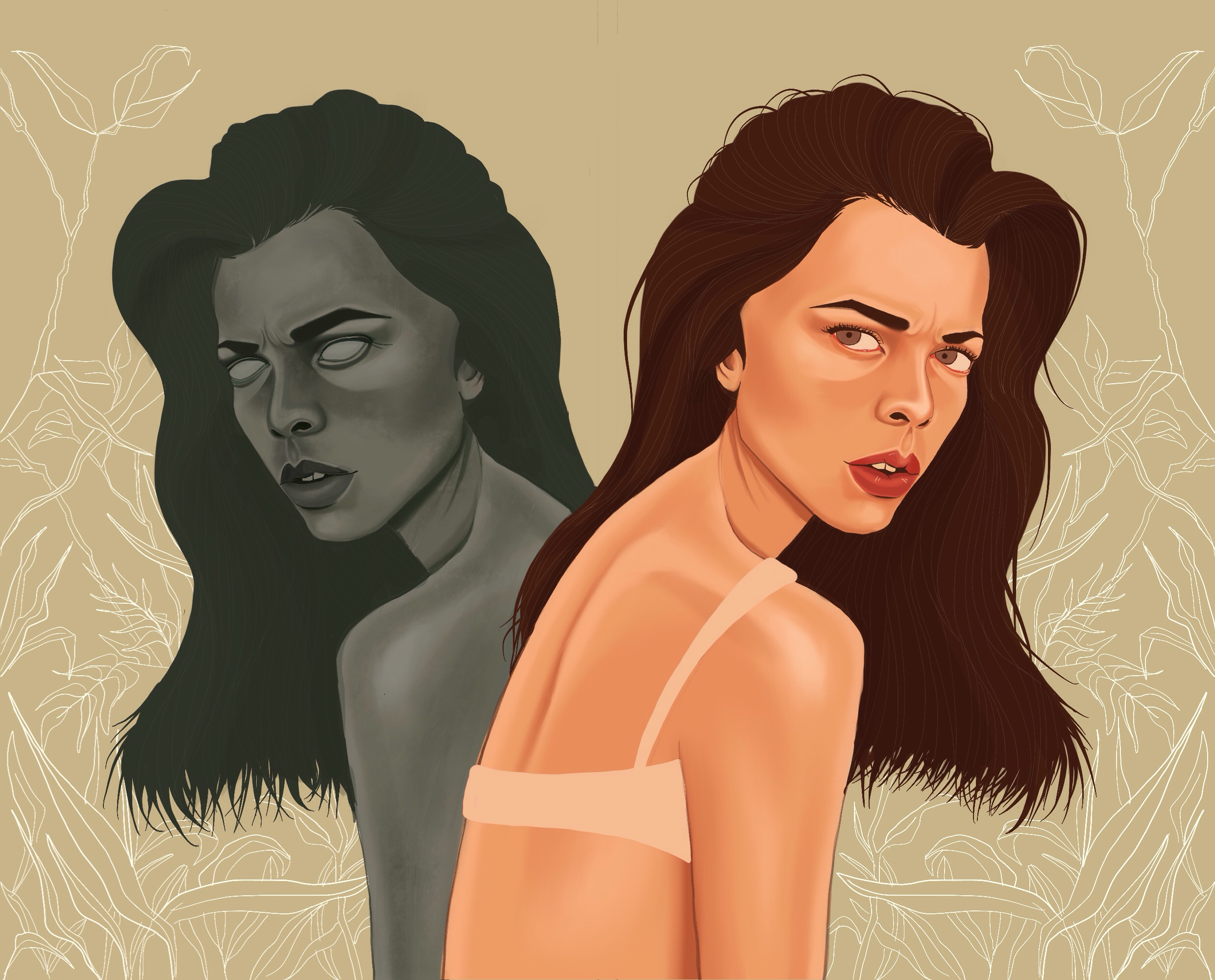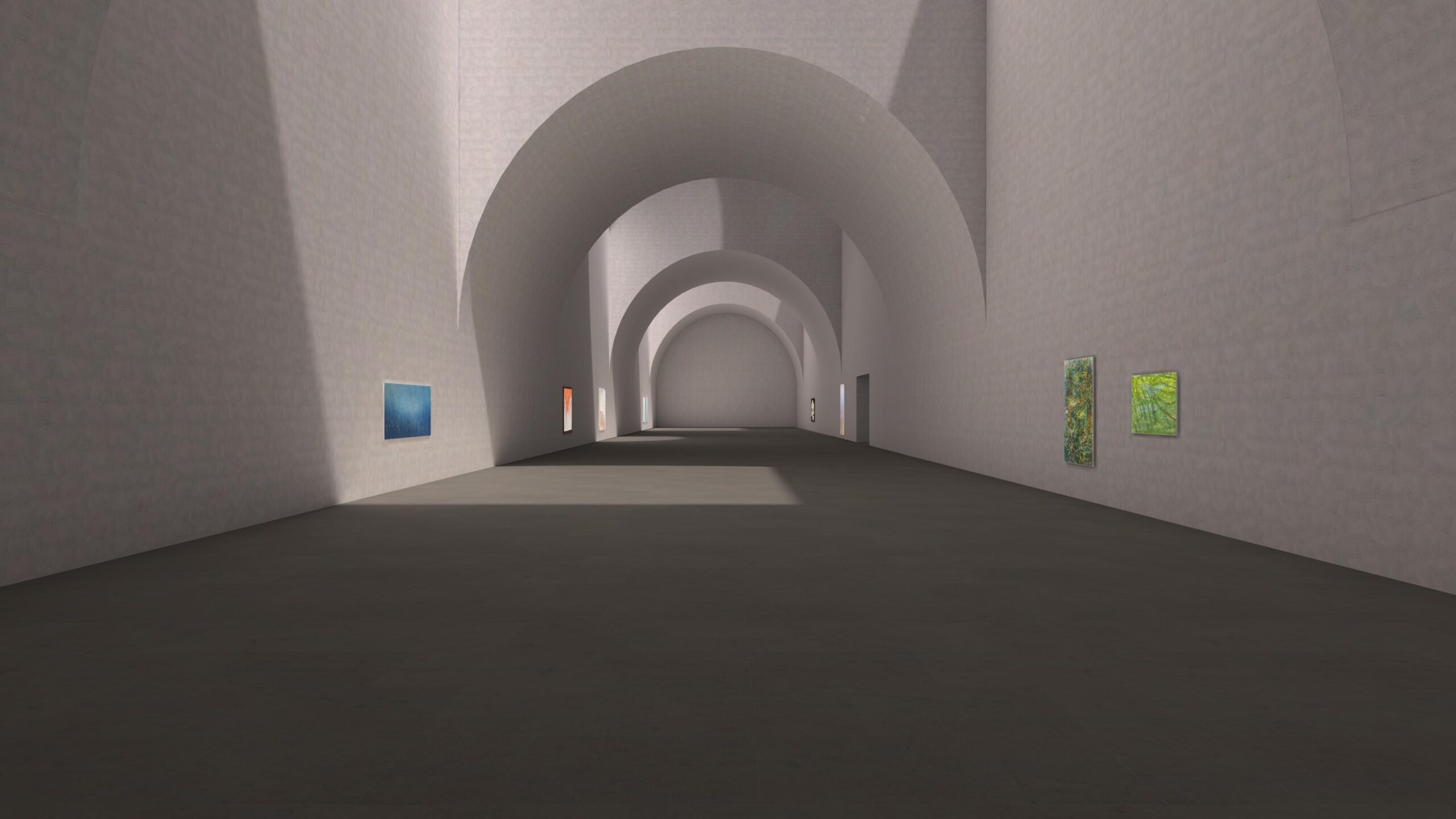Neeti Modgil’s The Car Wallahs explores some contentious territory with regard to its subject. Living in Princess Park, New Delhi, Modgil awoke one evening to the heaving sound of objects being hauled across her backyard and the accompanying sound of loud voices. For some, at 10 pm, the workday had only just ended. Modgil listened to the sound for a few days, with her ever-heightening curiosity eventually giving way to a trip to the area she frequently heard the sounds emerging from.
What followed for the photographer was a three-month push and pull with the community of Bihari migrants behind her house, who worked near India Gate, offering electronically operated rides on toy cars to children who visited the monument with their parents.
In equal parts interested and discomfited, Modgil began frequenting the slum and gauging the rhythms of their everyday, trying her best to blend in and put the community at ease by dressing in the same attire everyday and making small talk before delving gradually into deeper conversations.
There is much to be said about the series itself. The pictures show us the tradesmen framed against a black studio backdrop, which is framed against the environs of their locality. The central subject gazes intensely into the camera, arousing much attention from those watching. Something of a deliberate mis en scene is evident, with Modgil saying the black screen was put in place in order to lend dignity to the professions and the lives being captured. What comes to effect is an interesting transference of the central subject’s gaze to other objects/people surrounding them. The frame is saturated by the environs where it is shot and those watching it, that the aspect of posing, how they perceive posing, and Modgil’s alienation in the space itself is highlighted.
This has a pleasing, unnerving effect. The viewer of the photo perceives Modgil’s pictures through multiple subject perspectives, and sometimes with them. The animated chatter of the group of young men takes us from the right end of the frame to the left, the trail of conversation dies out at the intense gaze of the young man, staring into the camera.
When followed from the left end of the frame, we see the toy car he is propped up on posing once again an odd alienating effect: the young man far outgrows the chair, and yet there he is. An uneasy grimness enters the frame, still balanced with the easy natural light of the frame.
In another picture, someone fills water, and another figure gazes at the activity from far away, the body almost fading into light. In a seperate picture, figures pass across the frame, the rude gash of a purple shirt is saved just in time by our protagonist on the car, whose expression, while serious is still not grim. In a more sombre picture, a much older man rests on the toy car with his stick propped up high. One can easily see this as a picture in the innumerable photo archives of rural India that tourists endlessly romanticize when visiting. In this context, however, it turns into a softened vulnerability. The sunlight at the edge of the frame, the brightness of the car he sits on arouses a restless, unpinnable sadness in those watching: how are the lives of these people? Where do they come from, and what will become of them in the shifting tides of our election-ridden, unemployment driven, maddened country?
In her interactions with the community, Neeti reports they were across a variety of ages, ranging from their early twenties and late teens to the oldest being in his late 60s. He passed away due to alcohol dependency in the course of the time she worked with the community. Having no local identification either in the form of an Aadhar, voter or ration card, they live in small rooms with 7-8 other individuals and remained consistently wary of being photographed for a long period before consenting and ascertaining she was not one of the cops, who charged them 500 rupees every night due to the illegal nature of their dwelling.
The lesson remains this: ‘illegal’ is yet another keyword for an exploitable loophole.
With her project being dotted with disappearances throughout the course of it, Modgil reports a primary challenge being communication and consistency, with people consenting to be interviewed only to disappear entirely the next day, wary of her identity and project.
There is much in this series that brings to light the hesitancies and positionalities of its wary subject, and in the way in which it addresses their lives, brings to attention another issue one faces when documenting marginalized groups.
How does one write about the experience of migrants without other-ing them? Is there a journalism, or a photography possible that can move beyond the obvious disadvantage of migrants entering the city, and write about their lives as legitimate enquiries and empathies, and not merely an empty metaphor of poverty and the ‘state of the country’, for an internet feed?
In recent years, a number of accounts addressing this question emerge from Delhi about the lives of migrants who enter the city for different lengths of time: seasonally, for unbound years and otherwise. The earliest example of the same would be Aman Sethi’s A Free Man, based around Sadar Bazaar’s Bara Tooti Chowk.
Neeti Modgil’s series, while providing no easy answers to this query, maintains an uneasy relationship with the tide of developments that sweep the country at the moment. With elections close at hand, the photographer’s series on The Car Wallahs was cut short as she and her family were moved out of their house in order to make way for the Prime Minister’s insistence on a National War Memorial. And that, perhaps, is a metaphor no one needs to spell out.
Neeti Modgil is a Delhi based documentary photographer, she earned a diploma in Creative Photography from Sri Aurobindo College for Arts and communication.
Neeti shares great passion for socio-political documentary work. She started her profession by assisting a well-known Commercial/ Advertising photographer, Jasmer Singh for a year and takes up various photography and film making assignments as a freelancer. Her body of work “The Car Wallahs” was recently published in Tasveer Journal and exhibited at the Indian Habitat Centre. She was also involved in the documentation project for PARI of the recent Farmer’s rally in New Delhi.
All photos by Neeti Modgil.
Text by Anandita Thakur.


